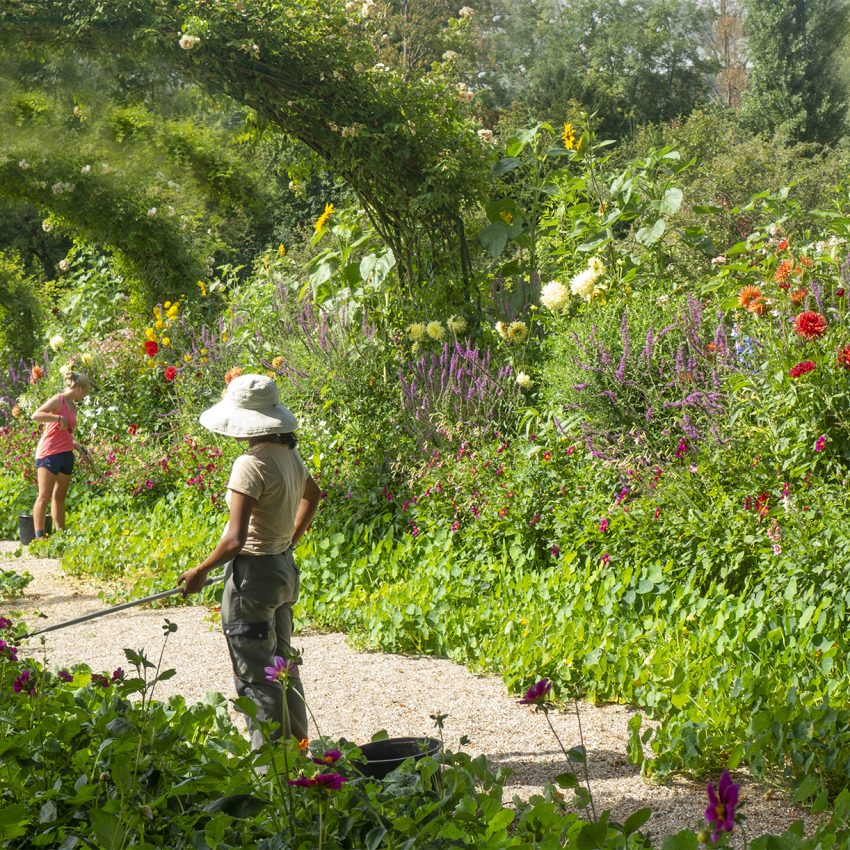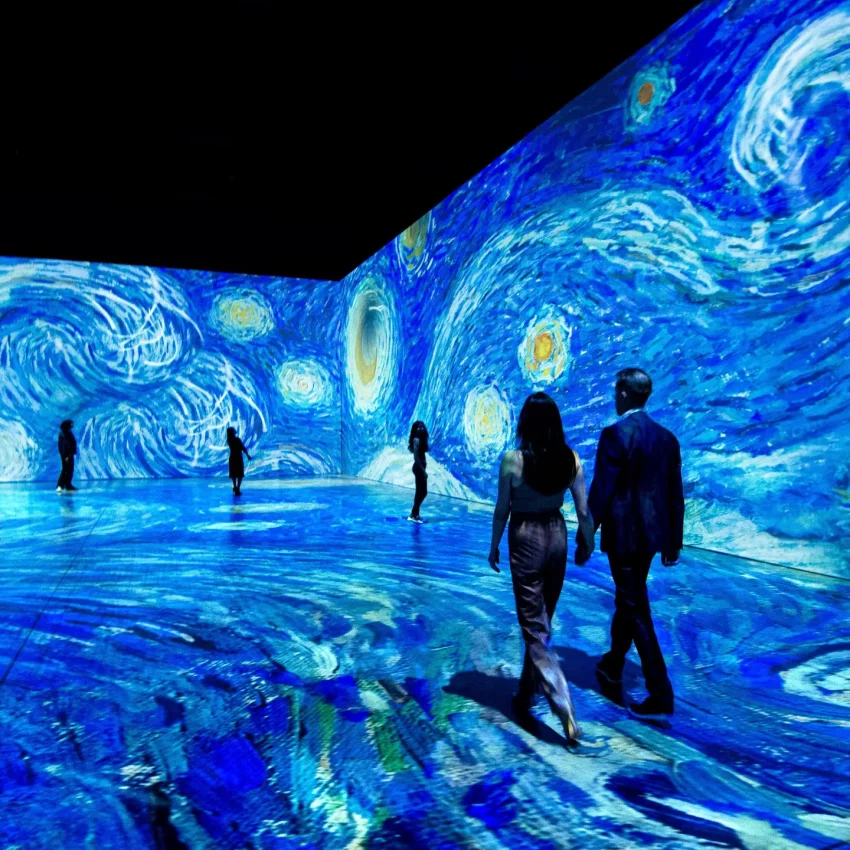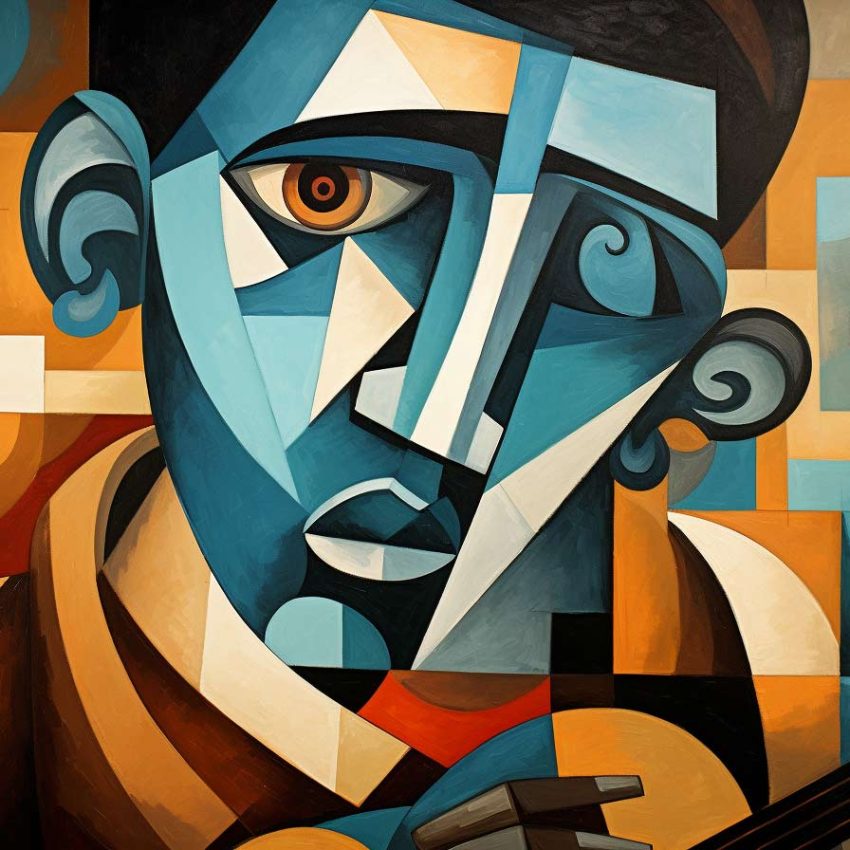Neoclassical Art
ORIGIN OF NEOCLASSICISM
Introduction: Origin and characteristics of neoclassical art
Neoclassical art emerged in the mid-18th century as a reaction against the overly decorative and extravagant style of the baroque and rococo periods. Inspired by classical Greek and Roman art, neoclassical artists sought to revive the principles of clarity, order, and simplicity in their works. One of the key characteristics of neoclassical art is its emphasis on portraying noble ideals such as heroism, patriotism, and virtue. This is evident in paintings that depict historical or mythological scenes with a sense of grandeur and moral significance.
In contrast to the emotional intensity of romanticism, neoclassical art favored rationality and restraint in its expressions. Artists like Jacques-Louis David became central figures in promoting this style through their precise compositions and use of classical themes. Neoclassicism also extended beyond painting to influence architecture, sculpture, and literature during this period. Overall, neoclassical art can be seen as a deliberate return to the timeless aesthetics of antiquity while also reflecting the political and social values of its time.
Historical background: Revival of classical art styles
History Painting
During the 18th century, a movement emerged that sought to revive the classical art styles of ancient Greece and Rome. This revival was a response to the ornate and extravagant Baroque style that dominated art during the Renaissance. Artists like Jacques-Louis David in France and Antonio Canova in Italy led this neoclassical revival, emphasizing simplicity, symmetry, and idealized forms in their works. Neoclassical art aimed to capture the essence of ancient civilization’s focus on reason, logic, and restraint.
One of the key driving forces behind the revival of classical art styles was a desire for social and political change. Neoclassicism was often utilized by artists as a means of expressing revolutionary ideals or nationalist sentiments. The emphasis on high moral values, heroism, and patriotism in neoclassical artworks resonated with audiences who were seeking inspiration from past civilizations to guide them through contemporary challenges. The resurgence of classical art styles also reflected a broader cultural shift towards rationality, order, and intellectualism during this period.
History painting emerged as a dominant genre within neoclassicism, depicting significant events from mythology, literature, and history. Artists viewed history painting as a means of conveying moral and philosophical messages, using classical themes to explore timeless truths and universal principles. These monumental works often served as allegories for contemporary political, social, and cultural issues, imbuing them with layers of meaning and significance
Baroque and Rococo
Neoclassicism, while distinct in its principles and aesthetics, did not emerge in isolation; rather, it was deeply influenced by the artistic movements that preceded it, namely the Baroque and the Rococo.
The Baroque era, characterized by its dramatic compositions, intense emotion, and grandeur, provided a fertile ground for the development of neoclassicism. Artists of the neoclassical movement, disillusioned by the extravagance and theatricality of the Baroque, sought to return to the clarity, order, and rationality of classical antiquity.
Similarly, the Rococo, with its ornate embellishments and emphasis on decorative arts, served as a foil to the simplicity and restraint championed by neoclassical artists. While neoclassicism rejected the excesses of both the Baroque and the Rococo, it also borrowed elements from these movements, incorporating aspects such as chiaroscuro lighting and dynamic compositions into its own artistic repertoire.
Thus, the relationship between neoclassicism, the Baroque, and the Rococo is one of evolution and transformation, with each movement leaving its indelible mark on the artistic landscape of its time.
Neoclassical Artwork: A Study in Symmetry and Form
Neoclassical artworks exemplify the principles of balance, order, and rationality. Artists meticulously crafted their compositions, paying careful attention to every detail to achieve a sense of harmony and unity.
From the graceful lines of a marble sculpture to the balanced arrangement of figures in a painting, neoclassical artwork reflects a reverence for classical ideals and aesthetics.
Key artists: Jacques-Louis David, Jean-Auguste-Dominique Ingres
Jacques-Louis David and Jean-Auguste-Dominique Ingres, two prominent figures in neoclassical french art, each brought a unique vision to the movement.
David is celebrated for his revolutionary spirit and powerful political imagery, encapsulated in works like The Death of Marat.
His bold use of color and dynamic compositions conveyed a sense of drama and grandeur that resonated with the tumultuous times of the French Revolution.
British artists also played a significant role in the Neoclassical movement, contributing to its development and dissemination across Europe. Figures like Joshua Reynolds and Thomas Lawrence were influential in bringing Neoclassical ideals to the forefront of British art during the late 18th and early 19th centuries.
Reynolds, as the first President of the Royal Academy of Arts, advocated for the study of classical art and emphasised the importance of drawing from antique sculpture and literature in artistic training.
Lawrence, on the other hand, was renowned for his portraits, which often incorporated elements of Neoclassical style, such as idealised forms and dignified compositions.
These British artists not only embraced Neoclassicism but also helped to establish it as a dominant artistic movement within the British Isles, contributing to its dissemination and influence throughout Europe.
In contrast, Ingres favoured a more restrained approach characterised by exquisite precision and meticulous detail.
His portraits were renowned for their elegant beauty and technical mastery, showcasing a deep reverence for classical ideals.
While David’s work embodied the upheaval of his era, Ingres’s paintings exuded a timeless quality that transcended contemporary concerns.
Both artists contributed significantly to the development of neoclassical art, leaving behind a rich legacy that continues to inspire artists today.
Benjamin West: Pioneering Neoclassical Painter
Benjamin West, an American painter, was one of the earliest proponents of the neoclassical style. Inspired by the classical ideals of ancient Greece and Rome, West sought to imbue his works with a sense of nobility and grandeur.
His historical paintings, such as “The Death of General Wolfe,” exemplify the neoclassical aesthetic, combining meticulous attention to detail with a profound sense of drama and emotion.
John Flaxman: Master of Neoclassical Sculpture
John Flaxman, a British sculptor and draftsman, contributed significantly to the revival of classical forms through his exquisite marble sculptures and illustrations of classical texts.
Influenced by the purity and simplicity of ancient Greek and Roman art, Flaxman’s sculptures embody the idealized beauty and grace of neoclassicism. His delicate renderings of mythological figures and heroic scenes epitomize the neoclassical aesthetic, emphasizing clarity of form and expression.
Angelica Kauffman: A Leading Female Neoclassical Artist
Angelica Kauffman, a prominent figure in the neoclassical movement, emerged as one of the leading female artists of her time. Born in Switzerland in 1741, Kauffman defied societal norms to pursue a career in art, ultimately achieving widespread acclaim for her historical paintings and portraits.
Renowned for her technical skill and intellectual depth, Kauffman broke barriers in a male-dominated art world, garnering recognition and respect for her contributions to neoclassical art. Her works often depicted classical themes and mythological subjects, rendered with sensitivity and grace.
Through her art, Kauffman not only showcased her talent but also challenged conventions, paving the way for future generations of female artists to follow in her footsteps.
Themes and subjects: Mythology, history, patriotism
Neoclassical Artwork: A Study in Symmetry and Form
In neoclassical art, the themes of mythology, history, and patriotism play a significant role in capturing the essence of the era. Mythological subjects were often used to symbolize timeless ideals and virtues, portraying heroes and gods in a way that conveyed moral lessons and values to the viewers. Artists drew inspiration from classical mythology to create allegorical works that reflected the societal norms and values of the time.
Furthermore, historical events were another common subject in neoclassical art, with artists depicting scenes from ancient battles or moments of heroism from national histories. These artworks served as a tool for promoting patriotism and national pride among viewers. Through their masterful depictions of historical events, artists were able to evoke a sense of shared identity and unity among citizens.
Overall, the use of mythology, history, and patriotism in neoclassical art helped to create a visual language that celebrated both cultural heritage and contemporary ideals. By intertwining these themes into their works, artists were able to engage with their audience on multiple levels – invoking emotions, sparking contemplation on societal values, and fostering a sense of collective identity within society.
Techniques and aesthetics: Precision, symmetry, clarity
In neoclassical art, precision, symmetry, and clarity are key elements that define the aesthetic principles of the movement. Artists during this time sought to emulate the harmony and order of classical antiquity, resulting in works characterized by meticulous attention to detail. The emphasis on precision allowed artists to create intricate compositions that demonstrated their technical skill and mastery.
Symmetry played a crucial role in neoclassical art as it conveyed a sense of balance and stability. Artists carefully arranged elements within their compositions to achieve perfect symmetry, creating a sense of order and harmony that reflected the ideals of classical beauty. This commitment to balance not only enhanced the visual impact of the artworks but also imparted a sense of permanence and timelessness.
Clarity was another essential aspect of neoclassical aesthetics, with artists prioritizing clear lines and unambiguous forms in their work. This clarity allowed viewers to easily comprehend the subject matter depicted in the paintings or sculptures, ensuring that the message conveyed by the artist was effectively communicated. Through precise rendering and deliberate composition choices, neoclassical artists aimed to illuminate themes of virtue, heroism, and moral values with utmost clarity for their audience.
Influence on future art movements
In the wake of Neoclassical art, the influence on future art movements cannot be overlooked. The emphasis on rationality and order in Neoclassicism paved the way for Romanticism to rebel against these constraints by celebrating emotion and imagination in art. This shift towards individual expression set the stage for subsequent movements such as Realism, Impressionism, and even abstract art forms.
Furthermore, the return to classical sources in Neoclassicism inspired artists of later movements to draw from history and mythology for their artistic themes. This legacy can be seen in Symbolism and Surrealism, where artists sought deeper meanings beyond surface appearances. By breaking away from tradition yet still drawing upon ancient influences, Neoclassical art played a pivotal role in shaping the diverse range of artistic expressions that followed it.
Neoclassic Critics
Johann Joachim Winckelmann (1717–1768) was a pioneering German art historian and archaeologist known for his influential work on ancient Roman and Greek art. His writings, particularly “History of Ancient Art,” advocated for the revival of classical ideals and played a key role in shaping the Neoclassical movement. Winckelmann’s emphasis on the beauty and harmony of classical antiquity and his scholarly analysis of ancient artifacts laid the groundwork for modern art historical methodology.
Critics hostile to Neoclassical sculpture often likened its works to “a valley of dry bones,” expressing a disdain for what they perceived as lifeless and derivative creations. This sentiment stemmed from a misunderstanding of the advocacy of Johann Joachim Winckelmann and his school, who championed the imitation of ancient art.
While Winckelmann advocated for the study and emulation of classical models, some artists and theorists misconstrued this as a call for slavish imitation rather than a deeper appreciation and reinterpretation of classical ideals. Consequently, Neoclassical sculpture faced criticism for its perceived lack of originality and vitality, as critics failed to recognize the innovative ways in which artists of the movement infused ancient themes with contemporary relevance and expression.
The Legacy of Neoclassicism
Although neoclassicism eventually gave way to new artistic movements such as Romanticism and Realism, its legacy endures in the annals of art history. The principles of balance, order, and rationality espoused by neoclassical artists continue to influence contemporary artists and designers, serving as a timeless source of inspiration and innovation. In an ever-changing world, neoclassicism stands as a reminder of humanity’s enduring fascination with the ideals of antiquity and the eternal quest for beauty and truth.
Art and Architecture
Neoclassicism not only shaped painting and sculpture but also left an indelible mark on architectural design during the late 18th and early 19th centuries.
Architects such as Étienne-Louis Boullée and Claude-Nicolas Ledoux embraced neoclassical principles, favoring symmetrical layouts, classical motifs, and restrained ornamentation in their designs.
Their works aimed to evoke the grandeur and rationality of ancient Greek and Roman structures, reflecting the ideals of neoclassical art. Moreover, the essay discusses how neoclassical art served as a wellspring of inspiration for later architects and artists.
The legacy of neoclassicism endured through the neoclassical revival movements of the 19th and 20th centuries, where practitioners revisited classical themes and forms, incorporating them into their work.
By perpetuating the dialogue between classical and modern art, these architects and artists contributed to the ongoing evolution of European artistic traditions, enriching the cultural landscape with their interpretations of neoclassical ideals.
Metropolitan Museum of Art
At The Metropolitan Museum of Art, visitors encounter a rich collection of Neoclassical art, showcasing works by esteemed artists such as Antonio Canova and Jacques-Louis David. David’s “The Death of Socrates” epitomizes Neoclassical ideals through its dignified portrayal of the philosopher’s final moments.
Canova’s marble sculptures, including “Psyche Revived by Cupid’s Kiss,” exemplify the movement’s grace and harmony. The museum also features decorative arts and architectural elements reflecting Neoclassical aesthetics. Overall, The Met Art Museum offers a captivating glimpse into the timeless beauty and intellectual depth of Neoclassical art.
Later Neoclassicism: Adapting Tradition to Modernity
As neoclassicism progressed into the late 18th and early 19th centuries, it underwent notable shifts while retaining its core principles. This phase, termed “later neoclassicism,” saw artists infusing classical themes with dynamism and emotion. While maintaining clarity and order, they explored broader subject matters, including contemporary events. Despite challenges from emerging movements, neoclassicism endured, influencing artists well into the 19th and 20th centuries
Conclusion: Legacy and lasting impact of neoclassical art
As we reflect on the legacy and lasting impact of Neoclassical art, it becomes apparent that this artistic movement continues to shape our understanding of beauty, harmony, and idealized forms. Neoclassical artists like Jacques-Louis David and Antonio Canova sought to revive the classical ideals of ancient Greece and Rome, emphasizing order, clarity, and restraint in their works. Their dedication to precision and symbolism in portraying historical events or mythological scenes left a profound mark on art history, influencing both modern artists and art historians alike. Moreover, the influence of Neoclassical art extends beyond its aesthetic principles; it also played a significant role in shaping political and social ideologies during its time.
The emphasis on heroism, patriotism, and virtue depicted in Neoclassical works served as a powerful tool for propagating nationalistic sentiments during periods of revolution or upheaval. By infusing their art with moral lessons and allegorical meanings, Neoclassical artists contributed to the cultural discourse of their era while leaving an enduring imprint on subsequent generations.
In the broader context of European art, Neoclassicism emerged as a response to the ornate and extravagant style of Baroque art. Its emphasis on rationality and order stood in stark contrast to the emotional intensity of its predecessor. British artists, in particular, played a significant role in advancing the Neoclassical movement, with figures like Antonio Canova leaving a lasting legacy through their exquisite sculptures.
The influence of Neoclassicism also extended to French art, where artists and architects alike embraced its principles in their works. Many artists believed that art should embody timeless ideals, drawing inspiration from classical art forms to create works of enduring beauty. This dedication to classical aesthetics resonated with art students and art enthusiasts, fostering a deeper appreciation for the rich heritage of classical art within the modern artistic landscape. As famous artists continued to explore and reinterpret Neoclassical themes, their contributions served to enrich the cultural tapestry of European art history, bridging the gap between classical and modern art forms.





